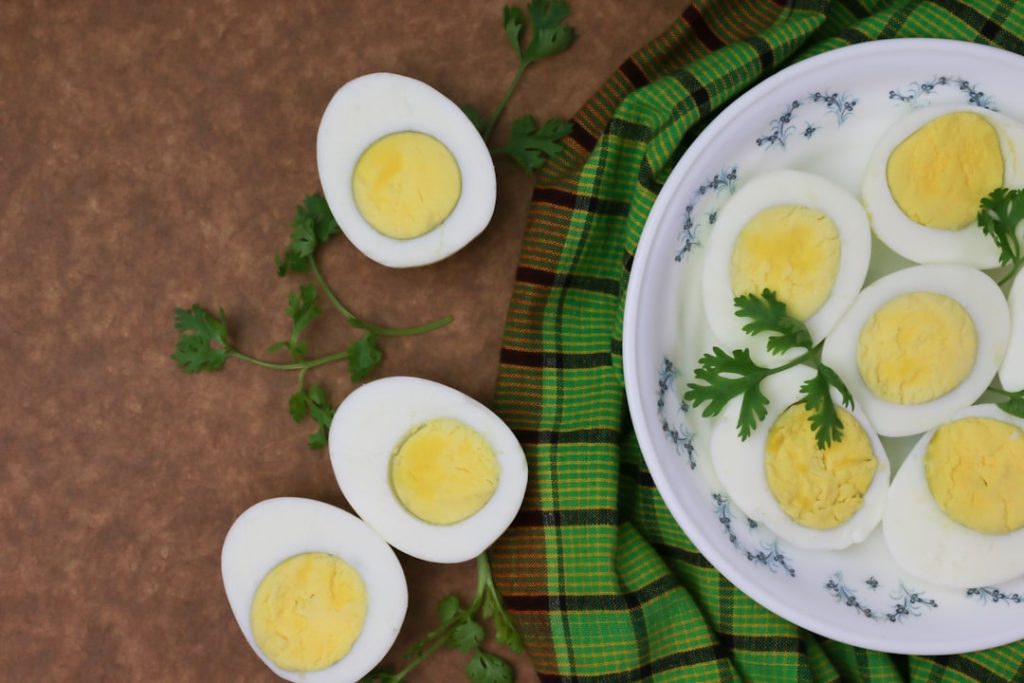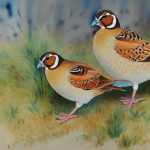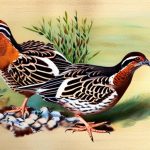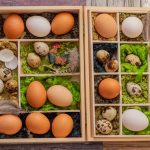Quail breeding is a rewarding and enjoyable hobby that can also be a profitable venture for those interested in raising these small game birds. Quail are known for their delicious eggs and meat, making them a popular choice for backyard farmers and homesteaders. Breeding quail can be a relatively simple process, but it does require some knowledge and preparation to be successful. In this article, we will explore the various aspects of quail breeding, from choosing the right breeding stock to caring for quail chicks. Whether you are a beginner or an experienced breeder, there is always something new to learn about quail breeding.
Table of Contents
Key Takeaways
- Quail breeding can be a rewarding and profitable venture for those interested in raising these small game birds.
- When choosing breeding stock, it is important to select healthy, disease-free birds with desirable traits such as good egg production and strong genetics.
- Setting up a breeding environment involves providing adequate space, nesting areas, and proper nutrition for the quail.
- Understanding quail breeding behavior, such as mating rituals and egg laying patterns, is essential for successful breeding.
- Managing quail breeding cycles involves controlling lighting, temperature, and other environmental factors to stimulate breeding and egg production.
Choosing the Right Breeding Stock
Selecting the right breeding stock is crucial for successful quail breeding. When choosing breeding stock, it is important to select healthy, disease-free birds with good genetic traits. Look for birds that are active, alert, and have a good body condition. It is also important to consider the age of the birds, as older quail may have a decreased fertility rate. When selecting breeding stock, it is recommended to choose birds from different bloodlines to avoid inbreeding and maintain genetic diversity within the flock. Additionally, consider the purpose of your breeding program – whether it is for meat production, egg production, or exhibition – and select birds that are best suited for your specific goals.
Once you have selected your breeding stock, it is important to quarantine new birds before introducing them to your existing flock. This will help prevent the spread of diseases and parasites to your established birds. During the quarantine period, observe the new birds for any signs of illness or abnormalities. It is also a good idea to have a veterinarian perform a health check on the new birds before introducing them to your breeding program. By carefully selecting and quarantining your breeding stock, you can help ensure the health and success of your quail breeding program.
Setting Up a Breeding Environment
Creating the right breeding environment is essential for successful quail breeding. Quail are relatively small birds and can be housed in a variety of enclosures, including cages, aviaries, or pens. When setting up a breeding environment, it is important to provide adequate space for the birds to move around and exhibit natural behaviors. The enclosure should also provide protection from predators and the elements, as well as easy access for feeding and cleaning.
Quail are ground-dwelling birds and prefer to have access to a variety of substrates, such as sand, soil, or grass, for dust bathing and foraging. Providing hiding spots and visual barriers within the enclosure can also help reduce stress and aggression among the birds. Additionally, it is important to provide nesting boxes or areas for the hens to lay their eggs in privacy. The nesting boxes should be filled with suitable nesting material, such as straw or shredded paper, to encourage egg laying and provide a comfortable environment for brooding.
In addition to the physical environment, it is important to consider the lighting and temperature requirements for quail breeding. Quail are sensitive to changes in day length and require specific lighting conditions to stimulate breeding behavior. Providing a consistent light cycle with 14-16 hours of light per day can help encourage egg production and mating behavior. Maintaining a stable temperature within the breeding environment is also important for the health and well-being of the birds. By creating a suitable breeding environment, you can help ensure the comfort and productivity of your quail breeding program.
Understanding Quail Breeding Behavior
Understanding quail breeding behavior is essential for successful breeding and egg production. Quail are social birds that form strong pair bonds during the breeding season. Males will often perform elaborate courtship displays to attract females, including vocalizations, wing displays, and chasing behavior. Once a pair has formed, they will engage in mating behavior, which typically involves the male mounting the female and copulating.
Quail are prolific layers and can produce a large number of eggs throughout the breeding season. Hens will typically lay one egg per day, with peak egg production occurring in the spring and summer months. It is important to collect eggs regularly to prevent them from being damaged or eaten by the birds. Once collected, the eggs should be stored in a cool, dry place with consistent humidity until they are ready for incubation.
In addition to mating behavior and egg production, it is important to understand the brooding behavior of quail. Hens will often exhibit brooding behavior after laying a clutch of eggs, which involves sitting on the eggs to keep them warm and facilitate embryo development. By understanding the natural breeding behaviors of quail, breeders can better anticipate and manage the breeding cycle for optimal productivity.
Managing Quail Breeding Cycles
Managing quail breeding cycles is essential for maintaining a healthy and productive flock. Quail are seasonal breeders and will typically exhibit increased mating behavior and egg production during the spring and summer months. To maximize breeding success, it is important to provide optimal conditions for the birds during the breeding season.
One key aspect of managing quail breeding cycles is providing a suitable diet that meets the nutritional needs of breeding birds. During the breeding season, quail require a high-protein diet to support egg production and chick rearing. Supplementing their diet with calcium-rich foods, such as crushed oyster shells or limestone grit, can also help support strong eggshell formation.
In addition to nutrition, it is important to monitor the health and well-being of the breeding birds throughout the breeding cycle. Regular health checks and parasite control can help prevent disease outbreaks and maintain optimal reproductive performance. It is also important to provide regular opportunities for exercise and social interaction within the flock to reduce stress and promote natural breeding behaviors.
By carefully managing quail breeding cycles, breeders can help ensure the long-term health and productivity of their flock. Understanding the natural breeding patterns of quail and providing appropriate care during the breeding season can help maximize egg production and chick rearing success.
Incubation and Hatching
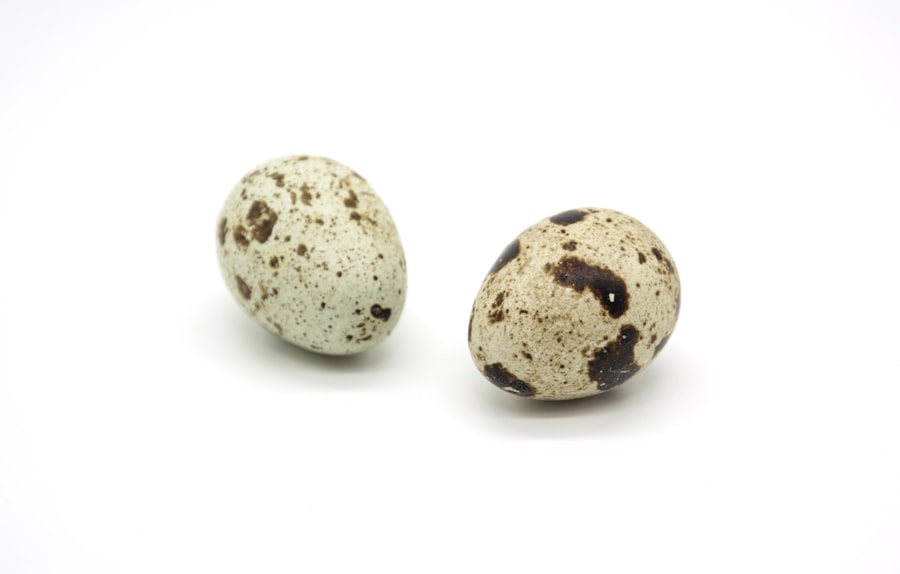
Incubation and hatching are critical stages in the quail breeding process that require careful attention and management. Once eggs have been collected from the nesting boxes, they should be promptly transferred to an incubator for optimal development. Quail eggs typically have an incubation period of 17-18 days, during which they require consistent temperature and humidity levels for successful hatching.
When selecting an incubator for quail eggs, it is important to choose one that provides accurate temperature control and automatic turning capabilities. The temperature within the incubator should be maintained at 99-100 degrees Fahrenheit for optimal development. Humidity levels should be kept between 45-50% during the first 14 days of incubation, then increased to 60-65% during the final days leading up to hatching.
During incubation, it is important to regularly monitor the temperature and humidity levels within the incubator to ensure optimal conditions for embryo development. Turning the eggs several times a day can also help prevent the embryos from sticking to the shell membrane and promote even development.
As the hatch date approaches, it is important to prepare a brooder area for the newly hatched chicks. The brooder should be equipped with a heat source, such as a heat lamp or heating pad, to maintain a temperature of 95 degrees Fahrenheit for the first week of life. Providing clean bedding material, fresh water, and chick starter feed can help ensure the health and well-being of the newly hatched chicks.
Caring for Quail Chicks
Caring for quail chicks requires attention to their specific needs for warmth, nutrition, and protection. Newly hatched quail chicks are fragile and require a warm environment to thrive. The brooder area should be equipped with a heat source that provides a consistent temperature of 95 degrees Fahrenheit for the first week of life, gradually decreasing by 5 degrees each week until reaching room temperature.
In addition to warmth, it is important to provide newly hatched chicks with access to clean water and chick starter feed. Water should be provided in shallow containers to prevent drowning, while chick starter feed should be formulated specifically for young quail chicks to meet their nutritional needs for growth and development.
As the chicks grow, it is important to monitor their health and well-being regularly. Look for signs of illness or injury, such as lethargy, abnormal droppings, or respiratory symptoms, and provide appropriate care as needed. Additionally, it is important to protect the chicks from predators and provide a safe and secure environment within the brooder area.
By providing proper care and attention to quail chicks, breeders can help ensure their healthy growth and development into productive members of the flock. With careful management and attention to their specific needs, quail chicks can grow into strong and productive birds that contribute to a successful quail breeding program.
In conclusion, quail breeding is an enjoyable and rewarding endeavor that requires careful attention to various aspects of management and care. By selecting the right breeding stock, creating a suitable breeding environment, understanding quail breeding behavior, managing breeding cycles, and providing proper care during incubation and chick rearing, breeders can maximize their success in raising healthy quail for eggs or meat production. Whether you are a beginner or experienced breeder, there is always something new to learn about quail breeding that can contribute to your success in this fulfilling hobby or business venture.
If you are interested in learning more about the breeding system of quails, you may also want to check out this article on A-Frame Chicken Coop. This article provides valuable information on how to create a suitable living environment for chickens, which can also be applied to quails. Creating the right environment is essential for successful breeding and raising of quails.
FAQs
What is the breeding system of quails?
Quails are known for their monogamous breeding system, where a male and female form a pair bond and mate exclusively with each other during the breeding season.
At what age do quails reach sexual maturity?
Quails typically reach sexual maturity at around 6-8 weeks of age, although this can vary depending on the species and individual bird.
How do quails build their nests?
Quails are ground-nesting birds and typically build their nests in grassy or shrubby areas. The female quail will create a shallow depression in the ground and line it with grass, leaves, and other materials to form a nest.
What is the incubation period for quail eggs?
The incubation period for quail eggs is typically around 16-18 days, during which the female quail will diligently sit on the eggs to keep them warm and facilitate their development.
How many eggs do quails typically lay?
Quails are prolific layers and can lay anywhere from 8-20 eggs in a single clutch, depending on the species and individual bird.
Meet Walter, the feathered-friend fanatic of Florida! Nestled in the sunshine state, Walter struts through life with his feathered companions, clucking his way to happiness. With a coop that’s fancier than a five-star hotel, he’s the Don Juan of the chicken world. When he’s not teaching his hens to do the cha-cha, you’ll find him in a heated debate with his prized rooster, Sir Clucks-a-Lot. Walter’s poultry passion is no yolk; he’s the sunny-side-up guy you never knew you needed in your flock of friends!

